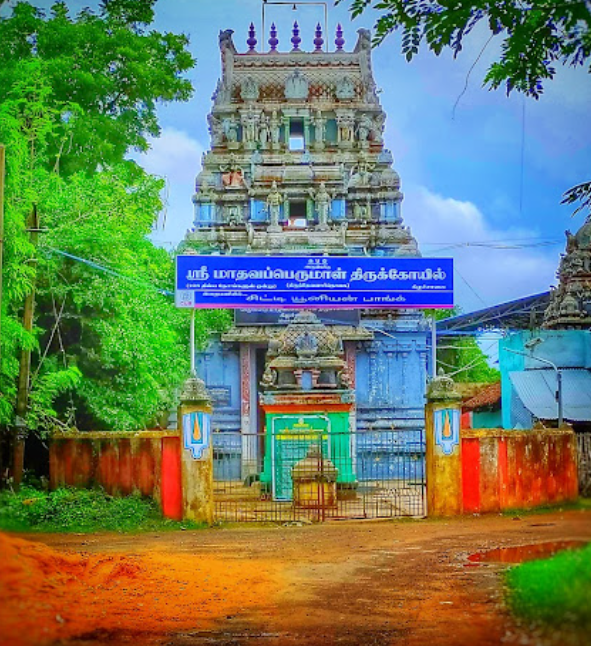The Madhava Perumal Temple, also known as Thiru devanar thogai, holds significant historical and spiritual importance in the Vaishnava tradition. It is glorified in the Nalayira Divya Prabandham, the Tamil canon composed by the Alvar saints, including Periyalvar, Thirumalisai Alvar, and Thirumangai Alvar, between the 7th and 9th centuries AD. The temple is recognized as a Divya Desam, one of the 108 sacred Vishnu temples mentioned in this revered text.
Throughout history, the temple has been mentioned in various publications from the 18th and 19th centuries, including "108 Tirupathi Anthathi" by Divya Kavi Pillai Perumal Aiyangar. Thirumangai Alvar, one of the prominent Alvars, is believed to visit the temple annually to consecrate the eleven deities during the temple’s festival, further emphasising its spiritual significance.
Legend of Madhava Perumal Temple :
The legend associated with the Madhava Perumal Temple underscores Vishnu's role as the supreme protector and sustainer of the universe. According to the story, Sati, the consort of Shiva, sacrificed herself at a grand yajna (sacrifice) organised by her father, Daksha, unable to bear the humiliation directed at her husband. Overcome with grief and rage, Shiva began his Tandava, the cosmic dance of destruction, with Sati's body on his shoulders. As Shiva’s frenzied dance continued, his dishevelled hair touched the ground, and each time it did, eleven new incarnations of Shiva emerged.
Since Shiva is associated with destruction, the emergence of these forms threatened the existence of all living beings. Fearing the imminent destruction of the universe, the Devas and sages prayed to Vishnu to restore balance. Responding to their pleas, Vishnu descended to earth and calmed Shiva’s fury. To honour Shiva’s request, Vishnu also took on eleven forms, which are believed to be enshrined in the eleven Thirunangur Tirupathi temples, including the Madhava Perumal Temple. This temple is thus one of the 108 Divya Desams.
